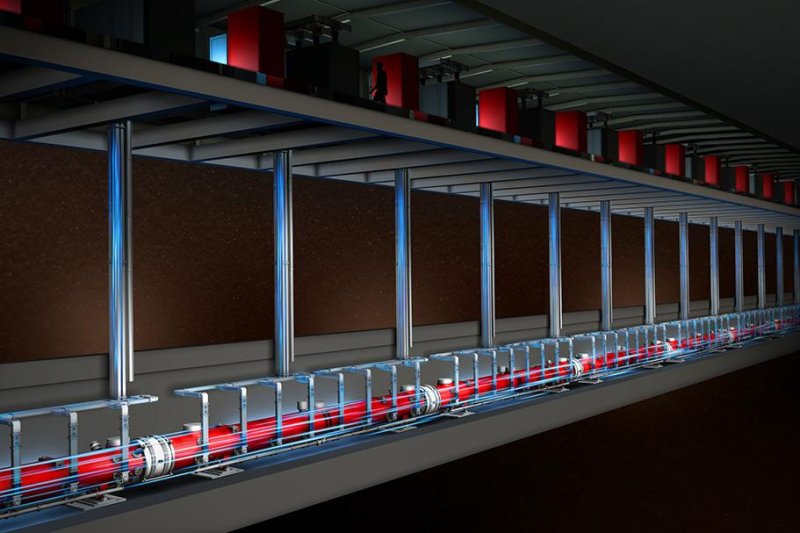A rendering of the planned second laser beam at the Department of Energy’s SLAC National Accelerator Laboratory. Photo by DOE/SLAC
MENLO PARK, Calif., April 5 (UPI) -- The X-ray laser at the Department of Energy's SLAC National Accelerator Laboratory is getting a second laser beam, this one 10,000 times brighter than the first. At a million pulses per second, the new beam will also be able to fire 8,000 times faster.
The upgrade project is called LCLS-II, and is expected to offer a tremendous power boost to the SLAC's Linac Coherent Light Source.
"LCLS-II will take X-ray science to the next level, opening the door to a whole new range of studies of the ultrafast and ultrasmall," Mike Dunne, the project's director, said in a news release. "This will tremendously advance our ability to develop transformative technologies of the future, including novel electronics, life-saving drugs and innovative energy solutions."
The new power will enable scientists to study atomic processes across a greater energy scale. Scientists use the Linac Coherent Light Source to excite particles in myriad ways and capture their reactions across very small timescales.
These moving atomic particle pictures reveal unique processes like the formation and fragmentation of chemical bonds or molecular restructuring during a phase change.
LCLS's laser beam is generated by propelling electrons through a tunnel lined with magnets, known as an undulator. The electrons, traveling at close to the speed of light, zigzag their way down the tunnel, giving off X-rays as they bounce.
The new laser beam tunnel will feature niobium metal cavities, which when cooled don't sacrifice any energy as they bounce the electrons down the undulator. The result is a brighter, faster beam.
"The upgrade will benefit X-ray experiments in many different ways, and I'm very excited to use the new capabilities for my own research," said Peter Weber, a professor of physics at Brown University. "With LCLS-II, we'll be able to bring the motions of atoms much more into focus, which will help us better understand the dynamics of crucial chemical reactions."
Stanford University operates the SLAC for the Department of Energy's Office of Science.















